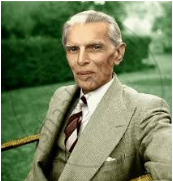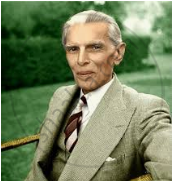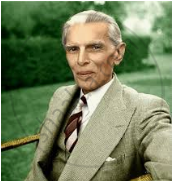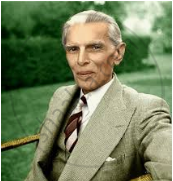Advertisements
Chapters
2: The industrial Revolution and the Rise of Imperialism
3: The Age of Revolution
4: The American Civil War
5: Decline of the Mughal Empire
6: Rise of Independent Regional Powers
7: Rise of British Power in Bengal
8: Expansion of British Power in India
9: British Policies and Their Impacts
10: The Revolt of 1857
11: Indian Renaissance — Social and Religious Reformers in India
12: Rise of Indian Nationalism
▶ 13: The Indian National Movement (1885-1916)
14: The Indian National Movement (1917-1934)
15: The Indian National Movement (1935-47)
16: The Union Legislature
17: The Union Executive
18: The Judiciary
19: The United Nations
20: Specialized Agencies of the UN
![Oxford University Press solutions for The Trail History and Civics [English] Class 8 chapter 13 - The Indian National Movement (1885-1916) Oxford University Press solutions for The Trail History and Civics [English] Class 8 chapter 13 - The Indian National Movement (1885-1916) - Shaalaa.com](/images/the-trail-history-and-civics-english-class-8_6:d8ff79086a7f4371ad2d25755229c0fa.jpg)
Advertisements
Solutions for Chapter 13: The Indian National Movement (1885-1916)
Below listed, you can find solutions for Chapter 13 of CISCE Oxford University Press for The Trail History and Civics [English] Class 8.
Oxford University Press solutions for The Trail History and Civics [English] Class 8 13 The Indian National Movement (1885-1916) Fill in the blanks
Fill in the blank:
The early nationalists spread ___________ among the people.
Fill in the blanks:
The assertive nationalists believed that British rule in India was not a _________ but a ______.
After the partition of Bengal, the assertive nationalists adopted the methods of ______ and ______ to achieve the goal of swaraj.
Fill in the blanks:
Separate electorates meant that the _________voters could elect _________representatives.
Fill in the blank:
The early nationalist leaders expelled the assertive nationalists from the Congress at the _________ session in 1907.
Oxford University Press solutions for The Trail History and Civics [English] Class 8 13 The Indian National Movement (1885-1916) Match the Columns
Match the following:
| Column A | Column B |
| 1. Dadabhai Naoroji | (a) 1905 |
| 2. Assertive nationalists | (b) separate electorates |
| 3. Partition of Bengal | (c) use of only Indian goods |
| 4. Muslim League | (d) immediate freedom from British rule |
| 5. Swadeshi | (e) early nationalists |
Oxford University Press solutions for The Trail History and Civics [English] Class 8 13 The Indian National Movement (1885-1916) Choose the correct answer
Choose the correct answer:
The history of the Indian national movement is broadly categorized into_____
three
four
five
Choose the correct answer:
_____________was an important assertive nationalist leader.
Bal Gangadhar Tilak
Dadabhai Naoroji
Surendranath Banerjea
Choose the correct answer:
The British followed the policy of divide and rule by dividing____on communal lines.
Bengal
Punjab
Gujarat
Choose the correct answer:
The Muslim League was established in________.
1905
1906
1913
Choose the correct answer:
Two Home Rule Leagues were formed in_________.
1916
1914
1918
Oxford University Press solutions for The Trail History and Civics [English] Class 8 13 The Indian National Movement (1885-1916) True or False
State whether the following is true or false:
The early nationalists believed in the justice and fair play of the British.
True
False
State whether the following is true or false:
The early nationalists presented their grievances to the British in the form of protests and strikes.
True
False
State whether the following is true or false:
The political beliefs' aims and methods of the assertive nationalists were the same as those of the early nationalists.
True
False
State whether the following is true or false:
The assertive nationalists had no faith in the constitutional methods followed by the early nationalists.
True
False
State whether the following is true or false:
Tilak knew that the British would concede to the demand for swaraj easily without any struggle.
True
False
Oxford University Press solutions for The Trail History and Civics [English] Class 8 13 The Indian National Movement (1885-1916) Answer the questions in one or two words/ sentences
Answer the following question in one or two words/ sentences:
Mention two leaders of the early nationalist phase.
Answer the following question in one or two words/ sentences:
Mention two leaders of the assertive nationalist phase.
Answer the following question in one or two words/ sentences:
Why were the assertive nationalists disillusioned with the leadership of the early nationalists?
Answer the following question in one or two words/ sentences:
When and why was Bengal partitioned?
Answer the following question in one or two words/ sentences:
Where and under whose leadership was the Muslim League established?
Answer the following question in one or two words/ sentence:
Mention two objectives of the Muslim League?
Answer the following question in one or two words/ sentences:
Why was the introduction of separate electorates a death blow to national unity?
Answer the following question in one or two words/ sentences:
Why did the Indian nationalists support the war effort of the British when the First World War broke out?
Answer the following question in one or two words/ sentences:
What was the main aim of the Home Rule Leagues?
Oxford University Press solutions for The Trail History and Civics [English] Class 8 13 The Indian National Movement (1885-1916) Answer the following questions briefly
Answer the following question briefly:
With reference to the early nationalists, discuss the following:
Beliefs of the early nationalists
Answer the following question briefly:
With reference to the early nationalists, discuss the following:
Methods of the early nationalists
Answer the following question briefly:
With reference to the early nationalists, discuss the following:
Important contributions made by the early nationalists to the national movement?
Answer the following question briefly:
With reference to the rise of the assertive nationalists within the congress, discuss:
The beliefs of the assertive nationalists
Answer the following question briefly:
With reference to the rise of the assertive nationalists within the congress, discuss:
The objectives of the assertive nationalists.
Answer the following question briefly:
With reference to the rise of the assertive nationalists within the congress, discuss:
How the methods of the assertive nationalists differed from those of the early nationalists?
Answer the following question briefly:
With reference to the Lucknow Session of the Congress of 1916, answer the following question:
What was the Lucknow Pact?
Answer the following question briefly:
With reference to the Lucknow Session of the Congress of 1916, answer the following question:
What was the objective of the Lucknow Pact?
Answer the following question briefly:
With reference to the Lucknow Session of the Congress of 1916, answer the following question:
What were the results of Lucknow Pact?
Oxford University Press solutions for The Trail History and Civics [English] Class 8 13 The Indian National Movement (1885-1916) Picture study
This is the picture of a national leader

Identify the person in the picture.
This is the picture of a national leader

Which political organization did Muhammad Ali Jinnah join and when?
This is the picture of a national leader

When and by whom was the Muslim League organization founded?
This is the picture of a national leader

What were the objectives of the Muslim League organization?
Solutions for 13: The Indian National Movement (1885-1916)
![Oxford University Press solutions for The Trail History and Civics [English] Class 8 chapter 13 - The Indian National Movement (1885-1916) Oxford University Press solutions for The Trail History and Civics [English] Class 8 chapter 13 - The Indian National Movement (1885-1916) - Shaalaa.com](/images/the-trail-history-and-civics-english-class-8_6:d8ff79086a7f4371ad2d25755229c0fa.jpg)
Oxford University Press solutions for The Trail History and Civics [English] Class 8 chapter 13 - The Indian National Movement (1885-1916)
Shaalaa.com has the CISCE Mathematics The Trail History and Civics [English] Class 8 CISCE solutions in a manner that help students grasp basic concepts better and faster. The detailed, step-by-step solutions will help you understand the concepts better and clarify any confusion. Oxford University Press solutions for Mathematics The Trail History and Civics [English] Class 8 CISCE 13 (The Indian National Movement (1885-1916)) include all questions with answers and detailed explanations. This will clear students' doubts about questions and improve their application skills while preparing for board exams.
Further, we at Shaalaa.com provide such solutions so students can prepare for written exams. Oxford University Press textbook solutions can be a core help for self-study and provide excellent self-help guidance for students.
Concepts covered in The Trail History and Civics [English] Class 8 chapter 13 The Indian National Movement (1885-1916) are India’s Struggle for Freedom, Rise of Nationalism, Early Political Associations, Home Rule Movement, Gandhian Era (1917 – 1947), Early Campaigns, Mass Movements, Civil Disobedience Movement, Formation of the Indian National Congress.
Using Oxford University Press The Trail History and Civics [English] Class 8 solutions The Indian National Movement (1885-1916) exercise by students is an easy way to prepare for the exams, as they involve solutions arranged chapter-wise and also page-wise. The questions involved in Oxford University Press Solutions are essential questions that can be asked in the final exam. Maximum CISCE The Trail History and Civics [English] Class 8 students prefer Oxford University Press Textbook Solutions to score more in exams.
Get the free view of Chapter 13, The Indian National Movement (1885-1916) The Trail History and Civics [English] Class 8 additional questions for Mathematics The Trail History and Civics [English] Class 8 CISCE, and you can use Shaalaa.com to keep it handy for your exam preparation.
